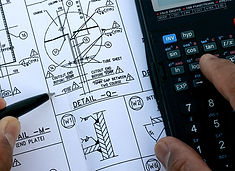
feed and feasibility study
Developing a bespoke product forms a fundamental aspect of devising a solution, however, there are instances where project loads and/or pressures present an area of concern.
In this instance, design calculations and FEA can be conducted to theoretically verify a system design, using recognised industry standards in conjunction with client specifications.
From conceptualised design, we can provide a full report to support product realisation. The study will assess the conceptualised design in line with client provided data, industry data and applicable standards. We have worked to or in accordance with the following;
Design:
API17L1/2 Flexible ancillary equipment design
ASME VIII Div 2 Rules for Construction of pressure vessels
DNVGL-ST-0337 Standard for shipboard lifting appliances
DNVGL-RP-F113 Pipeline Subsea Repair
Material:
Norsok M-001 Materials selection
EN 10204 Metallic products
ISO 898 Standard specification for carbon steel nuts & bolts
NACE: MR-0175
Fabrication:
EN ISO 15614-1 Specification for Qualification of Weld Procedures
Norsok M-101 Structural Steel Fabrication
ASME IX Welding, Brazing & Fusing Qualifications
EEMUA 158 Construction Specification for Fixed Offshore Platforms
Protection:
Norsok M-501 Surface preparation & protective coating
DNV-RP-B401 Cathodic protection
Norsok M-503 Cathodic protection
With the correct standards identified, we can produce design calculations & finite element analysis (FEA), with more specialist techniques utilised where applicable.
The study can be complimented with a failure mode effect and criticality analysis (FMECA), third party design verification using the likes of Lloyds, DNV or BV or an alternative client preferred validation method. This would be controlled using our in-house project management expertise.
DESIGN calculations
A design report, inclusive of calculations, is compiled to provide mechanical analysis and theory for specific equipment. They are utilised to verify a products capacity to perform in operation when subjected to real-time conditions.
Calculations are typically conducted to recognised industry standards and include applicable levels of contingency, ensuring integrity in accordance with accidental load-cases or similar.


finite element analysis
Further to theoretical design validation by calculation, it is often worthwhile expanding upon to utilise simulation software to apply loads to a CAD model applying pessimistic project variables. This allows our engineering team to determine:
-
Design capabilities to withstand loadings
-
Identify areas of weakness or unnecessary strength
-
Areas in which could be adjusted to provide a more economical solution
